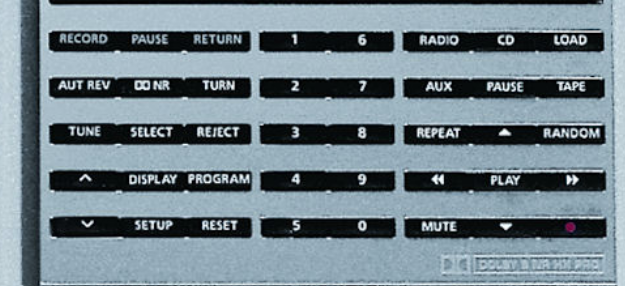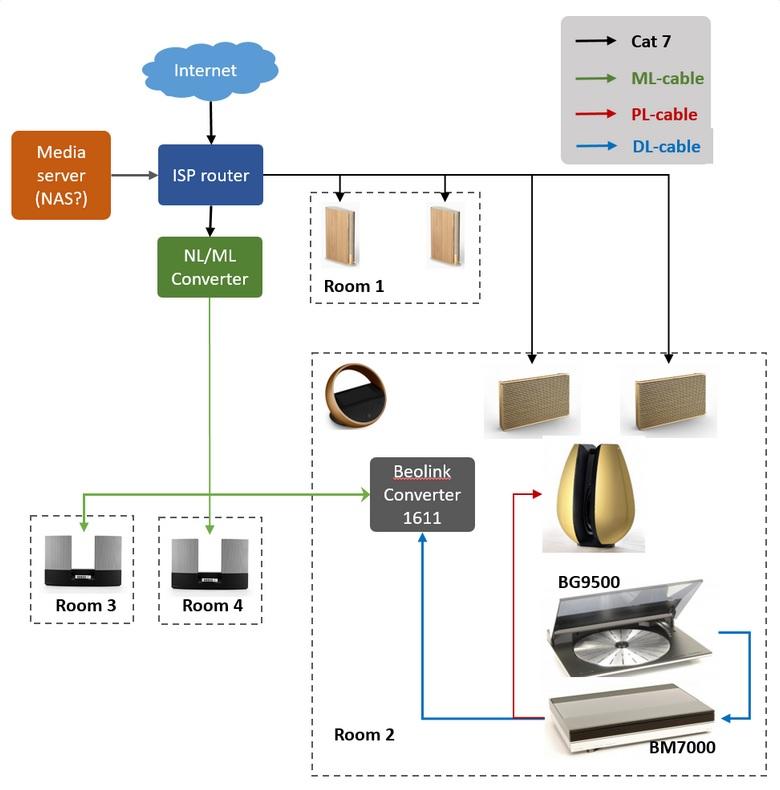Sia43
Forum Replies Created
- AuthorPosts
-
Unfortunately, I can’t check the Beogram and Beomaster yet as it seems like the MMC2 that followed the Beogram is not working. I haven’t dared to open up the Botmaster yet but check the area you described by pushing up the cable cover. it might have the RIAA and looks a lot like this picture.
Thanks, Guy, for all your help. They all sound logical. I’ve now finished the deal on BM6500 and will have a look for the serial number you mentioned. If it doesn’t have a built-in RIAA, I will need one plus the delay box you suggested.
Now I need to ship all the stuff to Spain from Sweden, a long drive that will need to wait a few months.
How can I find out if the RIAA is already fitted?
Thanks again for the information. BS-overture sounds good.
I am finalising a deal for a Beomaster 6500, which I prefer as I can hide it together with the BLC and NL/ML. If that deal doesn’t work, I will try to find a BS overture, which I know shouldn’t be as challenging. It took me almost two months to find a BM6500 for sale locally in the Stockholm region.
What is left on my list is the delay box.
Thanks again for all the information and advice.
You could get rid of the BL1611 by using an audiomaster such as Beosound Ouverture, which as far as I know is the only Beomaster with both ML and datalink. However, you would still need an RIAA stage.
That would be a good option as it is much easier to find an overture out there than a Beomaster 6500 or 7000. Can overture control Beogram and command it to play, Stop, pause, skip forward or backwards? It seems like Overture doesn’t have a dedicated phono button, but AUX. will the Beogram understand that it is connected through AUX with full functionality?

Carolpa,
The Beomaster translate the command to play the Beogram. So, if I understand you correctly, the signals are different, so Beomaster does something to the original signal. Sorry but I do not understand what you mean with this remark. The BM simply follow the instruction given and starts the source. The same for the other devices. They, the commands, open a path for the source, Beogram, to be played in the linked system.
I meant that somehow The BLC sends a command to the Beomaster, for example, “tell Beomaster to tell Beogram to start playing”. The Beomaster then recode it and send a message to Beogram “start playing”. These codes are, of course, in Datalink protocol. I meant that it would be great to recode the original message so it could emulate the Beomaster and send a direct message to the Beogram as if it came from the Beomaster.
Also, thanks for the tip about the old forum. I will search around there.
I also read somewhere that Beolink Gateway allows for coding master link commands. Please let me know if you have any clues about the possibility of achieving what I hope to do using the gateway or, even better, through NL/ML.
Thanks, Carolpa, for the explanation. Let’s put it this way. If in the above system, I send a signal to Beogram, for example, commanding, “start playing the record”. This signal will be an NL signal that will be sent to NL/ML converter. There it is converted to ML signal and from there to BLC, where it is finally translated to Dattalink commanding “play”.
The Beomaster receives this Datalink command and sends either the same command to the Beogram or does something with that command, so the Beogram understands it.
So, if I understand you correctly, the signals are different, so Beomaster does something to the original signal. However, It would be great to understand what it does to the signal. It would, for example, be great if the difference could be learnt so that NL-could, after some coding, send a proper signal that could communicate with the Beogram without necessary translation by the Beomaster, simply send signals that are ready to use to ht Beogram. This could make the Beomaster redundant, which has no function in modern B&O networks other than translating signals for the Beogram. The same could hold for Beocord or Beogram CD (if someone would like to use those sources).
Many thanks, Guy for your explanations and valuable advice. I will add the Delay-box to my list of stuff to acquire. Also, thank you for the link to Iconic-AV. I will contact them for the RIAA preamp.
However, I still can’t stop thinking about the necessity of a Beomaster in the system. Please correct me if I’m wrong, but I believe that Beomaster was needed to receive the IR commands and convert them to DATA-link so that the Beogram can be controlled remotely (since it doesn’t have its own IR receiver).
In a system based on NL, however, necessary commands can be sent by Halo to the Beomaster (and through it to Beogram), enabling control of the Beogram. This signal is received from Halo -> NL -> NL/ML converter, which converts the signal to ML signals, and then the ML singles are converted again to DL signals (though BL Converter 1611) and sent from there to the Beogram (through the Beomaster).
Since it seems like the Beomaster is necessary, it would be great to understand what Beomaster does to the signal (if any) before it is sent to the Beogram. However, If there is no change to the signal, it should be possible to eliminate the Beomaster.
Thanks Guy, for offering your help.
Please see the below schematic for the planned B&O network. My idea was that since I’m not planning to use IRremote (but an NL-connected Halo remote), I might not need the Beomaster. It is a big chunky box that takes up space, and I don’t need it; above all, it is old and can die anytime. Also, I thought I wouldn’t need an Audiomaster as the integrated network is an NL network, which theoretically doesn’t necessitate an Audiomaster like ML. However, from what Carolpa wrote, it seems like the NL network will be the passive one, so I will need an audio master after all (or at least that is what I understand). I would, however, be happy if I could ditch the Beomaster, as long as I can remotely control the Beogram.
 September 25, 2022 at 9:43 am in reply to: How can I operate a Beogram 8002 with a Beoremote One #8995
September 25, 2022 at 9:43 am in reply to: How can I operate a Beogram 8002 with a Beoremote One #8995Mark-sf, what if you ditch the necessity for controlling through IR or Bluetooth and instead want to control the Beogram through Beoremote Halo?
This way you won’t need the Beomaster to read and interpret IR signals. Will the combination Beogram -> Beolink COnverter-1611 -> NL/ML converter to Stage or other NL-based Beosounds?
The underlying question is, Do the Datalink signals differe when comparing signals from a Beogram from the ones from a Beomaster?
Thanks again Carolpa for the correction.
Many thanks, Guy and Carolpa for your responses, which are highly appreciated. I will give solution 2 a try as I don’t own a Beomaster yet.
If I’m reading your response correctly, the second solution allows for the connection of a Beogram, directly to the ML-network (using a BL-converter), without needing a Beomaster 6500 or 7000.
It would still be good to understnad the difference in link signal between the signal from Beogrma to BL-converter to ML in one hand and Beogram to Beomaster to BL-converter to ML Will the signals be different?
LeMirage, you have a point there regarding similarities with A9. However, A9, due to the design of its feet, will automatically be kept from the wall at some distance. This is, of course, possible with the Edge too, yet due to the flat surfaces of BS-Edge and the fact that mid and tweeter woofers (which are located on the back of the edge) are distorted most close to a wall, you will not have a choice but to keep a reasonable distance from the wall. This future makes it difficult to locate the speaker safely.
It might have helped if B&O could add active room adaptation, similar to BS-Level or A9, for that matter.
Yet Edge is a beautiful speaker and innovative, and as I said, I would buy a pair if I just had a considerably large room to find functional and safe locations for them.
Thanks for sharing. I did consider buying Edge yet I couldn’t justify it since:
1- it is semingly difficult to place; simply where to place it, I imagine that it ideally needs to be placed so that both sides are pointing out, which makes the speaker not very practical in my case with European smal type of living room. Placing it against a wall or corner would probably absorb or worse distort the sound. How is yours’ placed?
2- the wheel control, although interesting seems a bit of long a long shot and would most likely not be used very often, The one I tried was not precise and needed an exact amount of tilting, which I found not very user-friendly. Do you use that function often?
Having tha above said, I still fancy having one, actually a pair, as I believe a speaker with that capacity (yet a bit more practical) is missed in the Beosound range.
Dear MM,
Thanks once again. As always, you have been truly helpful, which I’m grateful for.
Thanks again, MM, for the highly valued advice.
So do you mean that:
1- A Beogrma cannot be connected directly to a BS-Essence.
2- Or do you mean it can be connected to BS-Essence while controlling it remotely requires an audio master in the ML network?
3- If the answer to 2 is Yes, would any ML-enabled audio master do, such as Beocentre 2 or Beosound 4?
4- And finally, which Beogram is the most recommended turntable?
Thanks again
Thanks Chartz, but I believe Steve from Sounds heavenly Talks about one in a youtube clip. See blow link
Stan, you are of course correct about the new Mozart based Beosound devices having line-in capability but I learned that this future is not available on the Google enabled version (after my purchase unfortunately). But it seems like Beoplay M3 and M5 don’t share that limitation!
It sounds like Beoplay M3 is a nice and cheap solution to be used as receiver to connect Older B&O audio devices (if you don’t need the speaker itself as been suggested by MM, above), which can easily replace more costly BS-Core or Essence MKII, It is however not based on Mozart platform, yet I assume it works just fine once connected through ethernet.
September 1, 2022 at 11:53 am in reply to: Comibning BS-wirless speakers in a system with old Beolink speakers #8275Thanks again, MM; your advice is highly valued.
You wrote that I could skip the other router, yet in the NL/ML user’s guide, the graphs always show a dedicated secondary network. Do you know what good the dedicated router does, then?
Also, since The Master-link connection on NL/ML accepts both RJ45 and ML sockets, is it then true that I could use CAT-7 cables instead of ML-Cables or will I loose certain functionalities?
- AuthorPosts
